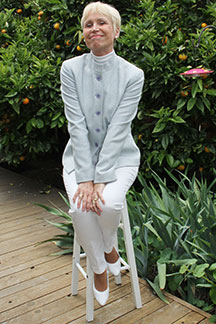Schloss Cecilienhof became international known as the site of the Potsdam Conference in 1945. Prior to the end of World War II, the palace had served as the home of Crown Prince Wilhelm, his wife, Duchess Cecilie von Mecklenburg-Schwerin and their six children. Located southwest of Berlin, Germany, the English Tudor-style building resembles a Grand English Country Manor with its half-timbered walls, bricks and many chimneys. With a total of 176 rooms, Cecilienhof is considerably larger than it seems.
Schloss Cecilienhof’s Pre-1945 History
The castle was the last palace to be built by the Hohenzollern, a dynasty that ruled Prussia and Germany for 500 years. The German Emperor Wilhelm II had Schloss Cecilienhof built for his eldest son, Crown Prince Wilhelm. Construction began in 1914 and was completed in 1917. After only one happy year together in their new home, the royal couple remained separated for the rest of their lives. Even before the revolution of 1918, the Crown Prince rarely found time to be with his family. The Duchess and her six children continued to live at the palace from time to time until 1920 when Schloss Cecilienhof was confiscated. The royal couple’s two oldest sons, Wilhelm and Louis Ferdinand, remained at castle to attend public school in Potsdam. But when the Red Army drew close to Berlin in February of 1945, the Duchess and all of her children fled without being able to salvage many of their possessions. At the end of World War II, the Soviets seized Cecilienhof, which was located within the Soviet Zone of Germany.
Schloss Cecilienhof and the Potsdam Conference
From July 17 to August 2, 1945, US President Harry S. Truman, British Prime Minister Winston Churchill and General Secretary of the Communist Party’s Central Committee Joseph Stalin convened at the Schloss Cecilienhof to decide the future of Germany. The three Allied powers decided to meet at the palace because the capital itself was too heavily damaged.
Prior to the Potsdam Conference, thirty-six rooms and the Great Hall were renovated and furnished with furniture from other Potsdam palaces. The Hohenzollern’s furniture had been removed by the Soviets and stored elsewhere. Cecilie’s music salon and writing room, Wilhelm’s smoking room, library and breakfast room as well as the Great Hall (where the Potsdam Agreement was signed) were among the rooms that were renovated and used during the Potsdam Conference. The various delegations were housed in the suburb of Potsdam-Babelsberg.
Schloss Cecilienhof’s Post-1945 History
After the Potsdam Conference had ended, Soviet troops used the palace as a clubhouse for a while. Later, Schloss Cecilienhof was handed over to the state of Brandenburg. In 1952, a memorial for the Conference was set up in the former private chambers of Crown Prince Wilhelm and Duchess Cecilie. The East German government used the palace for state receptions and other important meetings. In 1960, part of the castle was turned into a hotel. Today, part of Schloss Cecilienhof still serves as a museum. The hotel is temporarily closed for renovations and expects to reopen in 2018.
Since 1990, Schloss Cecilienhof is part of the Palaces and Parks of Potsdam and Berlin UNESCO World Heritage Site.
For a sneak peek at the first 20+ pages of my memoir, Walled-In: A West Berlin Girl’s Journey to Freedom, click “Download a free excerpt” on my home page and feel free to follow my blog about anything German: historic or current events, people, places or food.
Walled-In is my story of growing up in Berlin during the Cold War. Juxtaposing the events that engulfed Berlin during the Berlin Blockade, the Berlin Airlift, the Berlin Wall and Kennedy’s Berlin visit with the struggle against my equally insurmountable parental walls, Walled-In is about freedom vs. conformity, conflict vs. harmony, domination vs. submission, loyalty vs. betrayal.
















